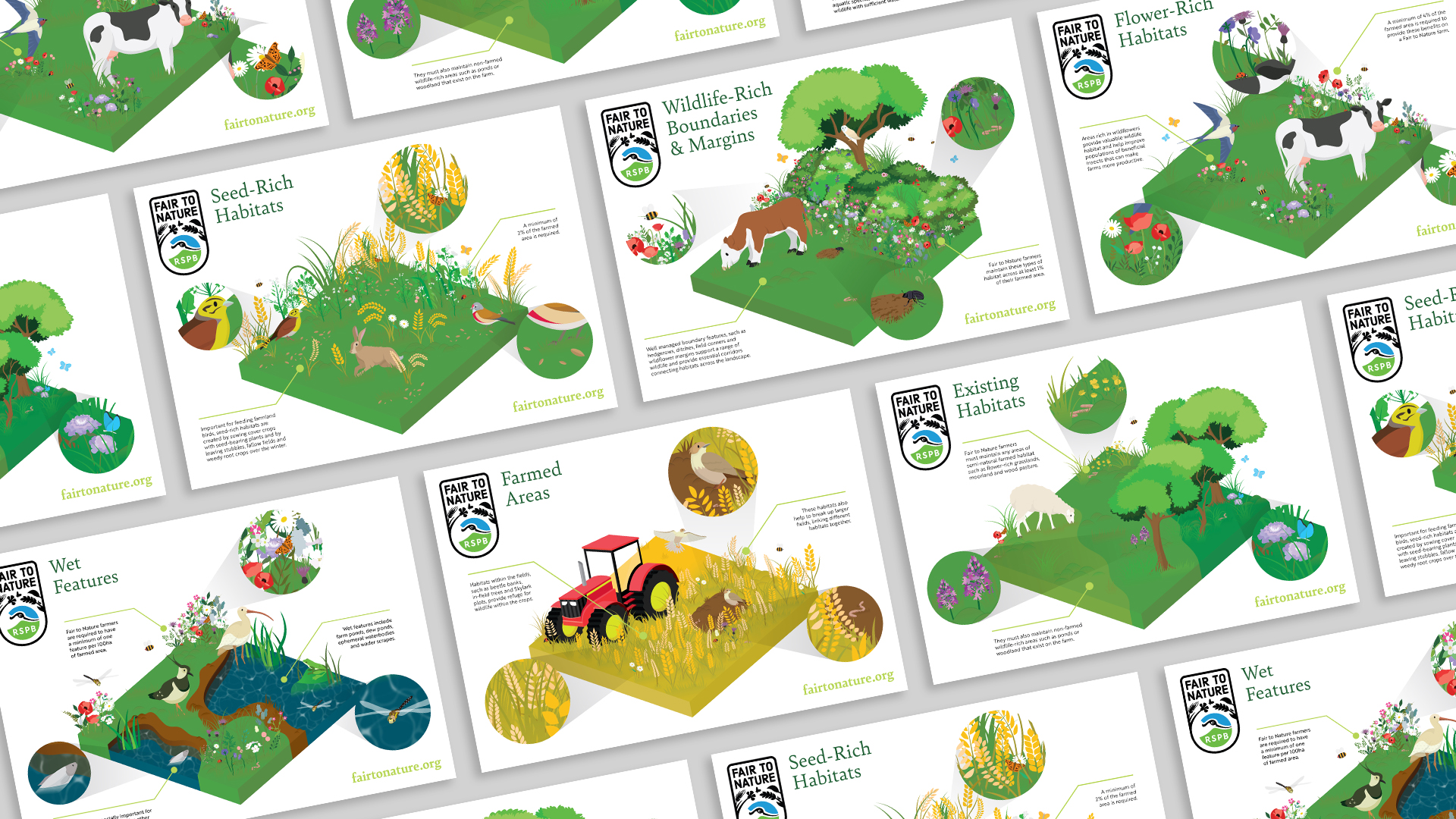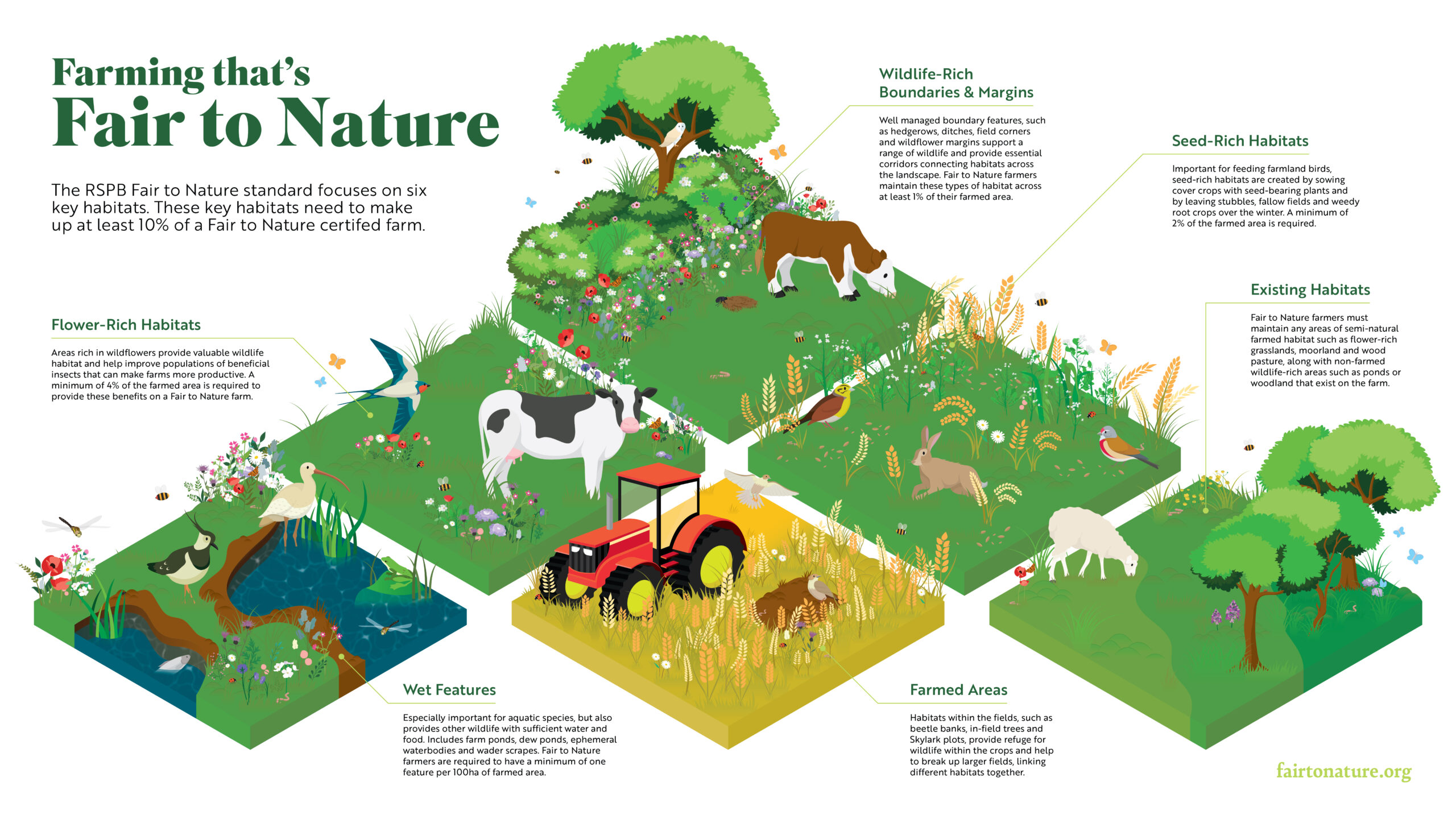

As a nation, over recent years, we’ve seen the disappearance of half our native farmland wildlife and witnessed the ecosystems we all depend on come under threat. With 70% of Britain’s land currently being farmed, Fair to Nature identified an opportunity to work alongside farmers to avert a critical situation for food production and redress the impact on nature.
Working with people across the supply chain, Fair to Nature help to protect and restore nature on farmland while making it easier for people to recognise sustainable products and support businesses that are committed to making a genuine difference.
With this approach in mind, Fair to Nature required a visual that highlighted the key guidance that can be implemented by farmers to improve the balance of nature across their farms whilst recognising them as a “Fair to Nature Farm”. After various discussions with the RSPB and Fair to Nature teams we summarised the six key habitats the certification focuses on: Farmed Areas, Wildlife Rich Boundaries and Margins, Flower-Rich Habitats, Seed-Rich Habitats, Wet Features and Existing Habitats. To ensure seamless application across various collateral we developed an isometric approach featuring each habitat within its own ‘island’, providing flexibility across all page orientations as well as offering the ability to highlight individual habitats within their own infographic.
Custom illustrations were developed to highlight the key principles whilst also curating valuable assets for the brand. Native wildlife to the farmland habitats were incorporated to present the potential of these areas if guidance is followed. The vibrant infographic is successful in presenting a visually captivating guide to farmers that both presents advise in a clear, concise way while also highlighting the opportunity for nature and biodiversity through Fair to Nature farms, helping sow the seeds of a more prosperous tomorrow.
To learn more about the Fair to Nature initiative visit their website now.



